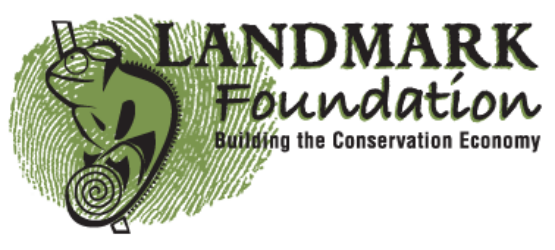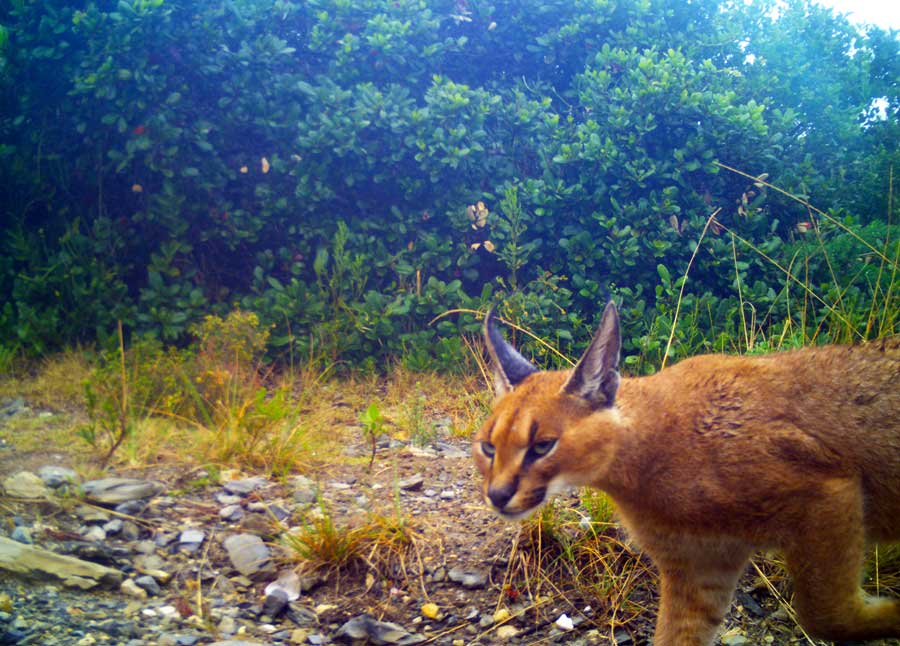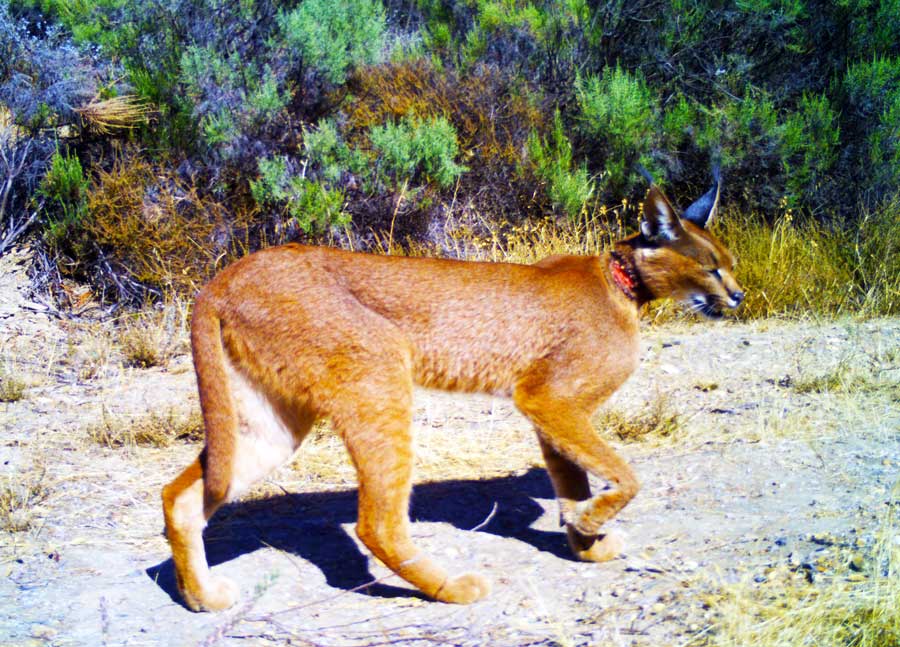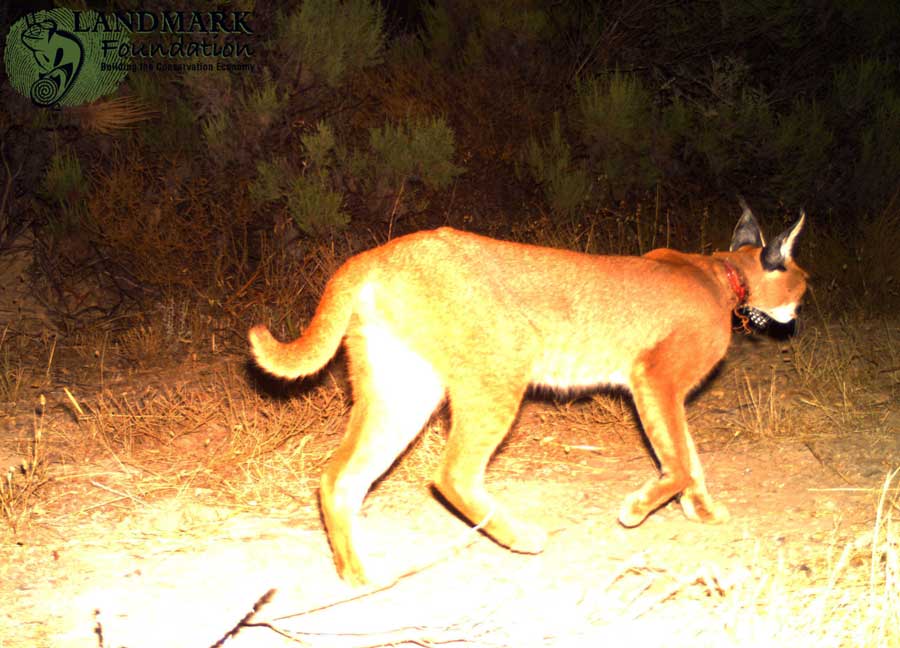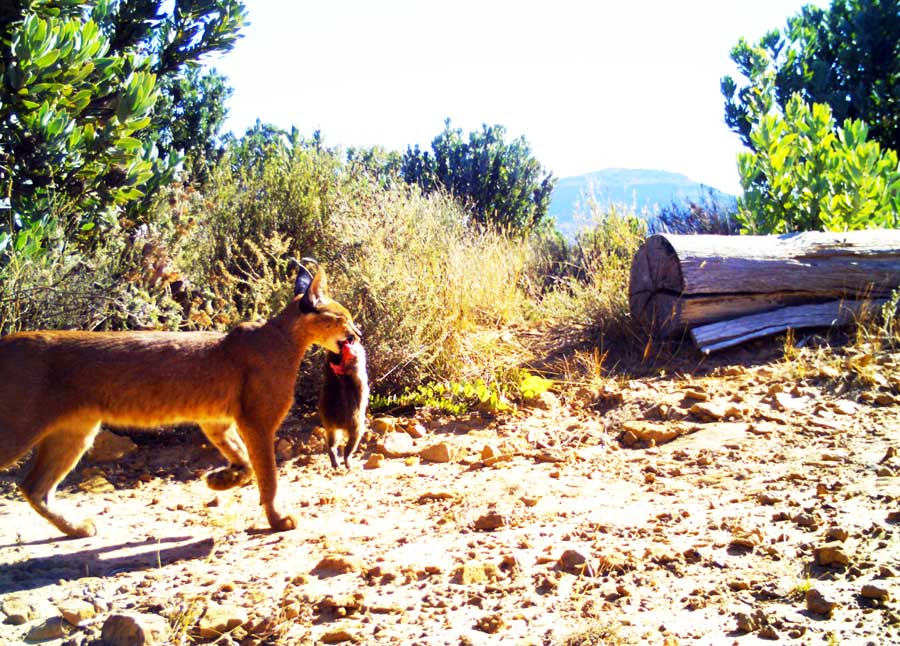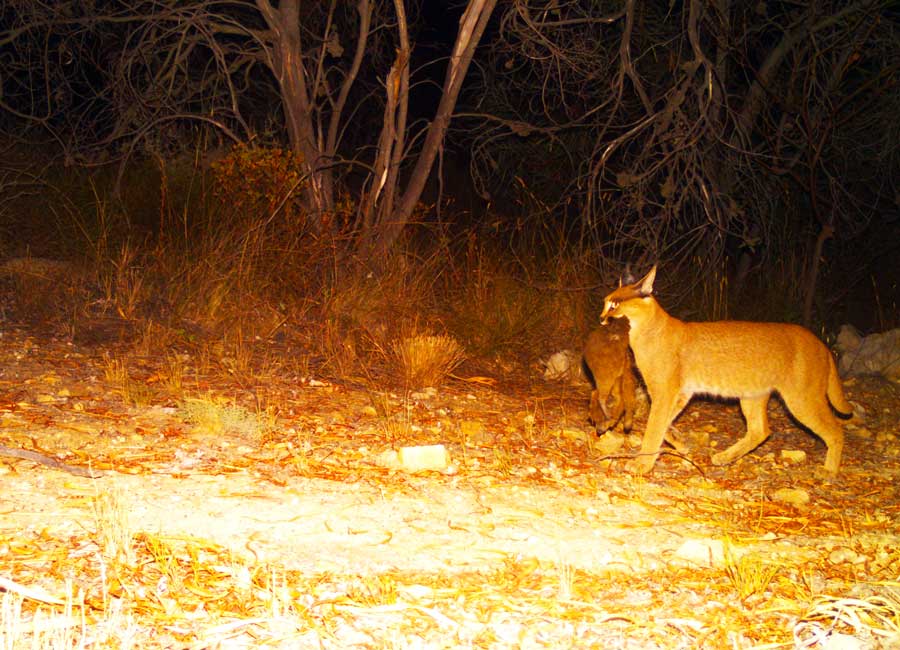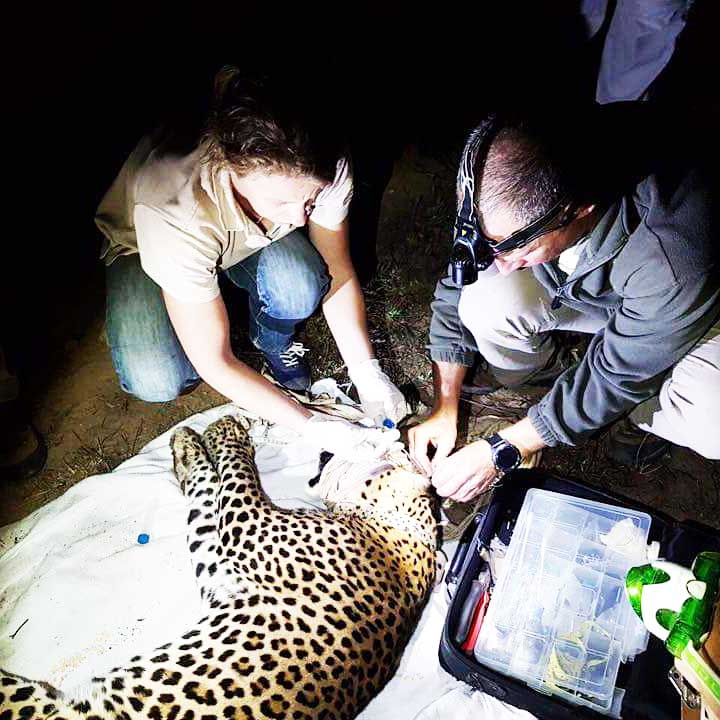
Research Caracal Concervation
Caracal Conservation
Caracal (Caracal caracal) are a widespread mesopredator in southern Africa. In South Africa, caracal are considered a major contributor to livestock losses. As a result, many farmers retaliate by using lethal controls to eradicate caracal and other predators, making them one of the most persecuted species in the country, alongside their mesopredator counterpart, the black-backed jackal (Canis mesomelas).
Lethal controls
Lethal controls are often indiscriminate, killing non-target species, thereby limiting the amount of wild prey available to predators. The prolific use of lethal controls raises the question of if and how these predator controls influence the ecology of caracal.
Caracal with a snare around its neck.
In this project, we assessed caracal ecology and behaviours (diet, habitat selection and activity patterns) across three land use zones with different predator management techniques:
- control site where there was no livestock and no predator management inputs;
- lethal site where traditional livestock farm where lethal controls were employed (including trapping and hunting);
- non-lethal site livestock farm where non-lethal predator controls were employed (human shepherds, kraaling and light deterrents).
Diet
Precise how the diet was assess: fecal sample, camera traps? Maybe mentioned about collared animals?
Across all three sites, caracal preferentially consumed small mammals, lagomorphs (e.g. hare), rock hyraxes (Procavia capensis) and invertebrates. On the non-lethal site caracal showed a broader dietary niche breadth in comparison to those on the lethal control sites, suggesting that alternative suitable prey is utilized on the non-lethal site. Domestic livestock were only consumed on the lethal control sites, where livestock contributed to less than 5% to the overall biomass consumed.
Caracal hunted species: red rock rabbit and rock hyrax.
This suggests that caracal habits differ under different husbandry management techniques and highlights the importance of maintaining and promoting the presence of natural prey on production landscapes so that caracal have alternative food sources. It also suggests that caracal do not preferentially consume livestock.
Caracal Diet: Percentage mammalian biomass consumed across the three treatments as based on seven mammal categories. Small mammals included small rodents and shrews; other mammals included cape mole-rats and ground squirrels.
Habitat Selection and Activity Patterns
On the non-lethal predator control livestock farm, we evaluated drivers of caracal habitat selection using data from 31 camera trap stations. Food resources (resource dispersion) explained caracal habitat selection most strongly, while livestock had the weakest relationship to caracal presence, suggesting that livestock density is not important to caracal.
While caracals were historically persecuted on the non-lethal farm, and are still heavily persecuted on neighbouring farms, caracals did not display spatial human avoidance. However, they may be compensating for this by displaying temporal avoidance, by being more active at night. The activity pattern analysis revealed that caracals were predominantly nocturnal throughout the year, shifting to crepuscular behaviour during winter months, having to avoid the extremely cold temperatures.
Caracal activity patterns overlapped significantly with the black-backed jackals, lagomorphs (rabits), and common duikers (Sylvicapra grimmia). Surprisingly, caracal activity overlapped with rock hyraxes (Procavia capensis) the least, despite rock hyraxes making up an important component of caracal diet. Caracal activity patterns appear to be attributed to human avoidance and temperature. In conclusion, the presence of sufficient wild prey and natural environments on farms could aid in human-caracal coexistence.
Caracal Activity Patterns: Summary of the diel activity patterns of caracals in the Karoo region, South Africa. Black “rug” marks along the x-axis represents the independent photographic events (n = 383). Data are based on camera trap surveys from 2015 – 2020.
Caracal and other species activity patterns: Density estimates of daily activity patterns of caracals and their main prey, competitors, humans, and livestock, on a predator-friendly farm in the Karoo, South Africa. Solid lines indicate kernel density estimates of caracals and dotted lines indicate kernel density estimates of prey and competitors. The dark grey shaded region represents the coefficient of overlap, while the light grey is the extension of the activity period. The blue and black “rug” marks along the x-axis represent independent photographic events.
Latest News
CONTACT US
Jeannine 0833243344
Bool 0845924099
E-Mail:
jeannine@landmarkfoundation.org.za
Find us on Facebook
Find us on Instagram
Follow us on X (Twitter)

